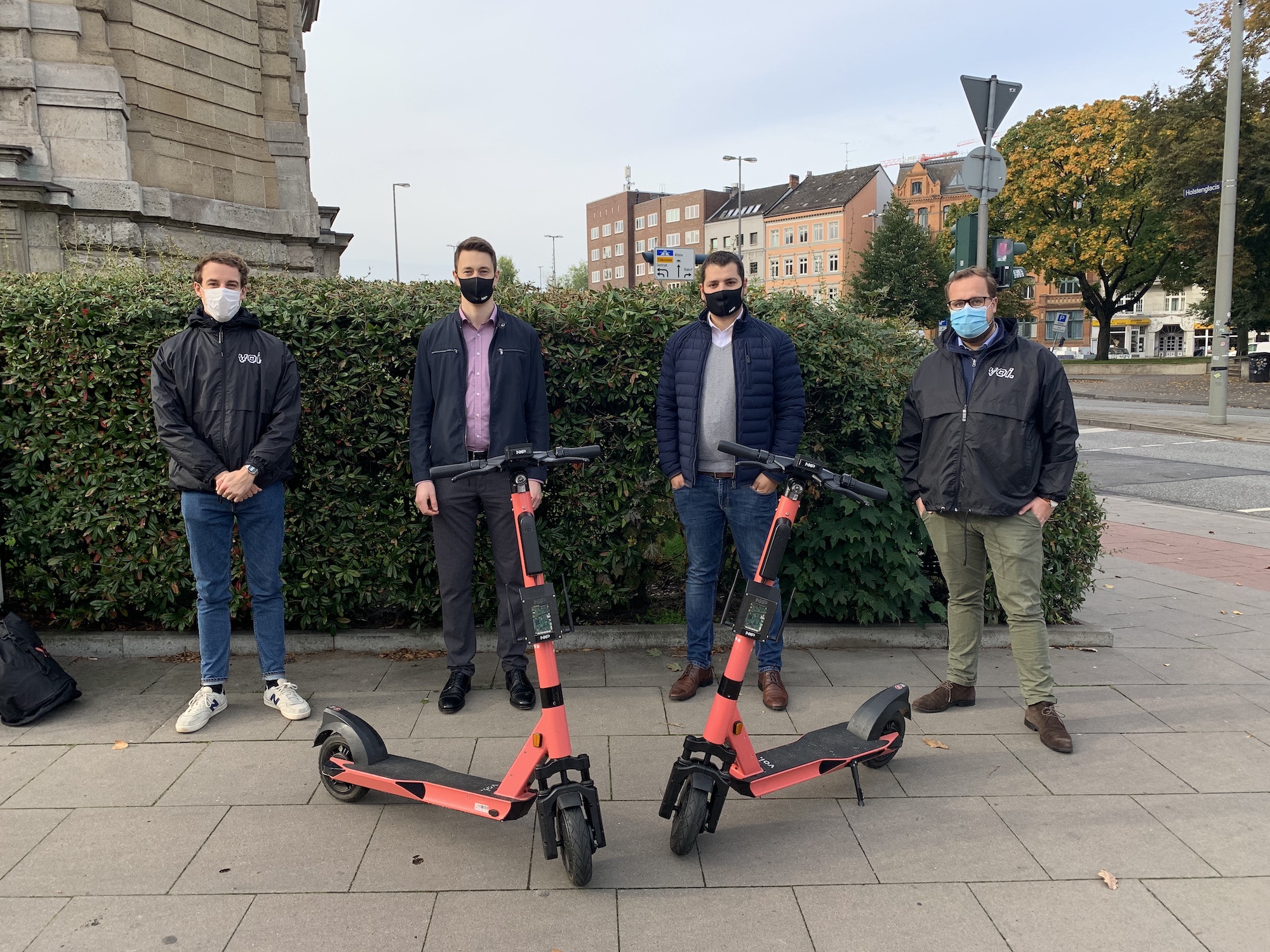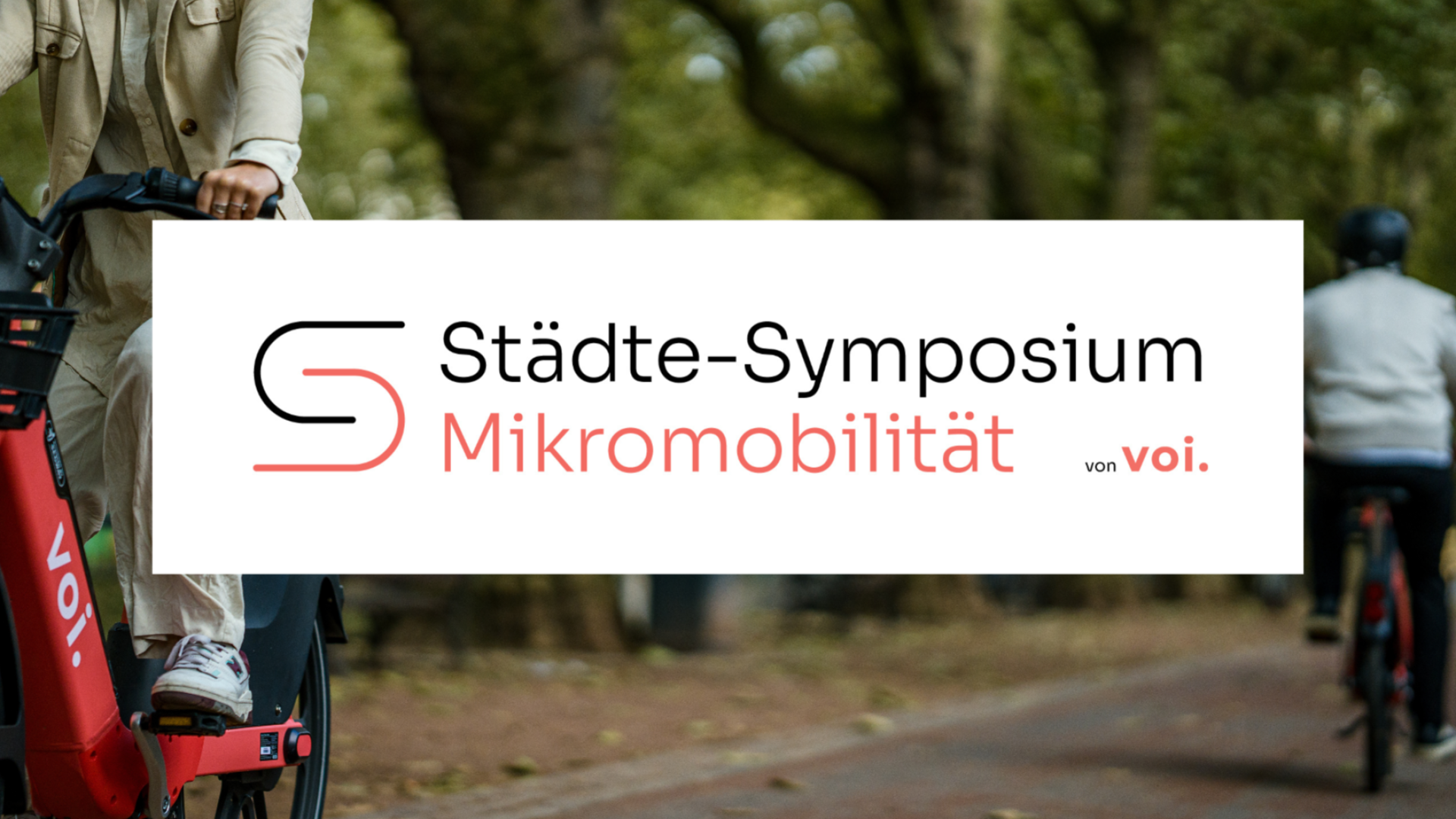Voi presents e-scooter prototype with collision detection and traffic light phase optimisation
Oct 30, 2020

Two weeks ago we announced our collaboration with Dutch NXP Semiconductors. Together, we are aiming to make our e-scooters even safer by equipping our vehicles with additional tech features, for an even better fit in the future urban mobility system.
The technology built on the scooters is an intelligent system, already used on cars and trucks. Real-time vehicle communication is fitted to the Voi e-scooters allowing the prototypes to communicate with other vehicles equipped with the same technology. The V2X technology by NXP enables Voi-e-scooters with collision detection and communication to the traffic light system on the designated test track for automated and network driving (TAVF) in Hamburg.
By enabling vehicles to communicate with each other in real time via the WLANp standard, driving can become safer and more comfortable in the future.
“Vehicle-to-vehicle communication via WLANp enables both collision warnings to be given to drivers in real time and speed recommendations to be sent via interfaces with traffic lights, so that road users can reach intersections when green or reduce speed prematurely when the green phase can no longer be reached“, explains Matthias Wilkens, Manager Industry Partnerships, at Dutch semiconductor manufacturer NXP.
This type of innovation is not reserved for cars only, as it can be adjusted to very different types of vehicles. With technical effort, even the smallest vehicles on the road can be equipped with V2X. The system solutions, which become smaller with each level of development, can also be installed on e-scooters without compromising driving comfort. NXP Semiconductors and Voi have worked together in the past months on two prototypes, which will now be tested on the TAVF test track in Hamburg.
“We have equipped the scooters with V2X technology based on the ETSI C-ITS G5 standard,” explains Wilkens. “This allows us to communicate with the TAVF infrastructure and other road users.”

The prototypes developed by Voi and NXP are connected via a digital interface and can communicate with each other over long distances without seeing each other. An intelligent algorithm, taking the scooter’s position, speed and direction into account, can thus help avoid collisions or make speed recommendations when approaching a traffic light intersection. In the event of an impending collision, the scooter drivers are warned by red flashing from a display mounted on the handlebars. This display also shows the timing of the current traffic light phase. By communicating with the signal systems of the TAVF test track, the scooters can display the remaining time of red and green phases and show them to the users by a small countdown.
In the future, the technology could also be expanded: For example, if the driver so wishes, a cruise control system could be activated at the push of a button, which adjusts the speed to avoid stops at signal towers completely.
The project is based on the ITS strategy of the City of Hamburg. The initiative aims to improve the quality of life for citizens and the attractiveness of Hamburg as a business location through new digitization projects. The areas of social affairs, housing, security and transportation play a particularly important role in this context. Projects of the initiative are presented, among others, at the Intelligent Transport Systems World Congress (ITS), which takes place annually in October.


